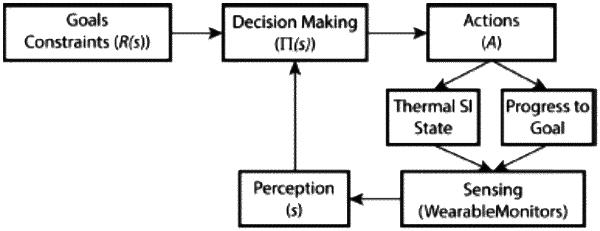| CPC A61B 5/02055 (2013.01) [A61B 5/02438 (2013.01); A61B 5/1118 (2013.01); G06F 16/9017 (2019.01); G06N 5/022 (2013.01); G06N 20/00 (2019.01)] | 20 Claims |

|
1. A system for providing pacing guidance to an individual while performing an activity, the system comprising:
a heart rate monitor;
an activity completion module configured to determine a level of the activity currently being performed that has been completed by the individual;
a memory storing
a plurality of pacing templates configured for at least the activity being performed by the individual and different activity completion levels of the activity being performed by the individual, and
a look-up table having entries for the plurality of pacing templates;
an output device;
a processor in communication with said heart rate monitor, said memory, said activity completion module, and said output device, said processor configured to
receive a heart rate signal from said heart rate monitor where the heart rate signal represents a heart rate,
receive a signal from said activity completion module representing the amount of the activity currently completed by the individual,
calculate a physiological strain index (PSI) where the heart rate is an input into the PSI,
selecting one pacing template based on the PSI and the amount of the activity currently completed using the look-up table in said memory, and
outputting information in said one pacing template to said output device, and
wherein the pacing templates include different levels at which to perform the activity.
|